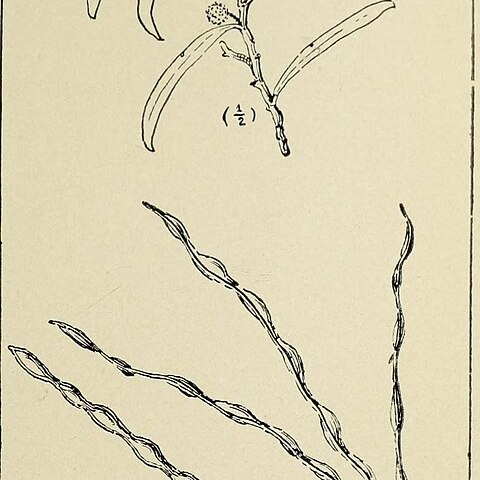A tall shrub 4-6 m high. It spreads to 3-6 m across. The branches stick upwards while the smaller branches hang downwards. The leaves (phyllodes) are 4-14 cm long by 0.5 cm across. They are curved, smooth and shiny. They have one vein ending in a curved tip. The flower heads are balls. They are small and yellow. The flower stalks occur one per leaf angle and they are covered with white hairs. The pods are 7-12 cm long by 0.5 cm across. They are almost straight or slightly curved. They are brown and constricted like a string of beads.


